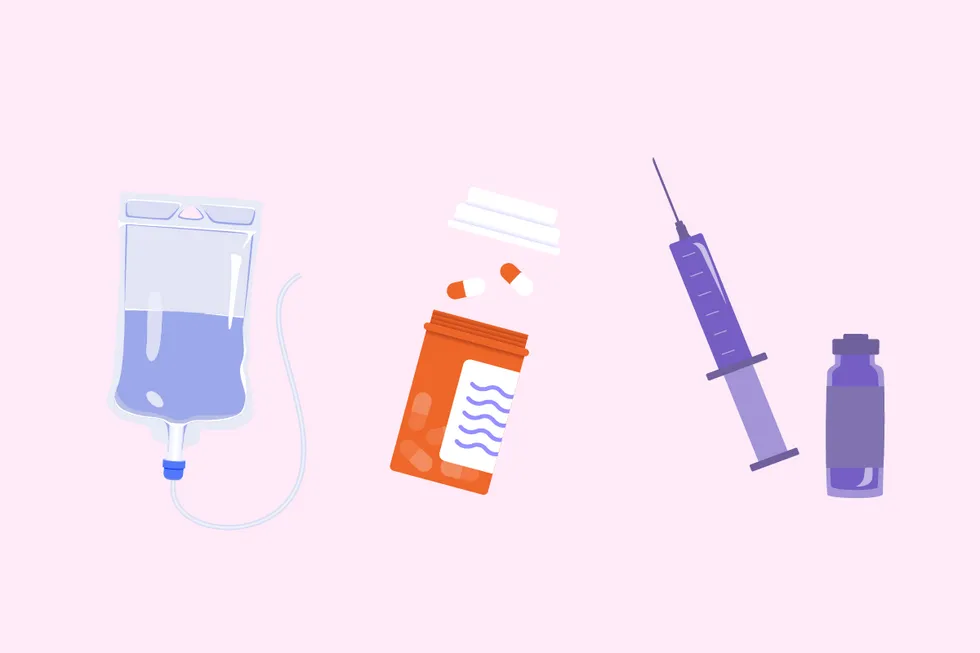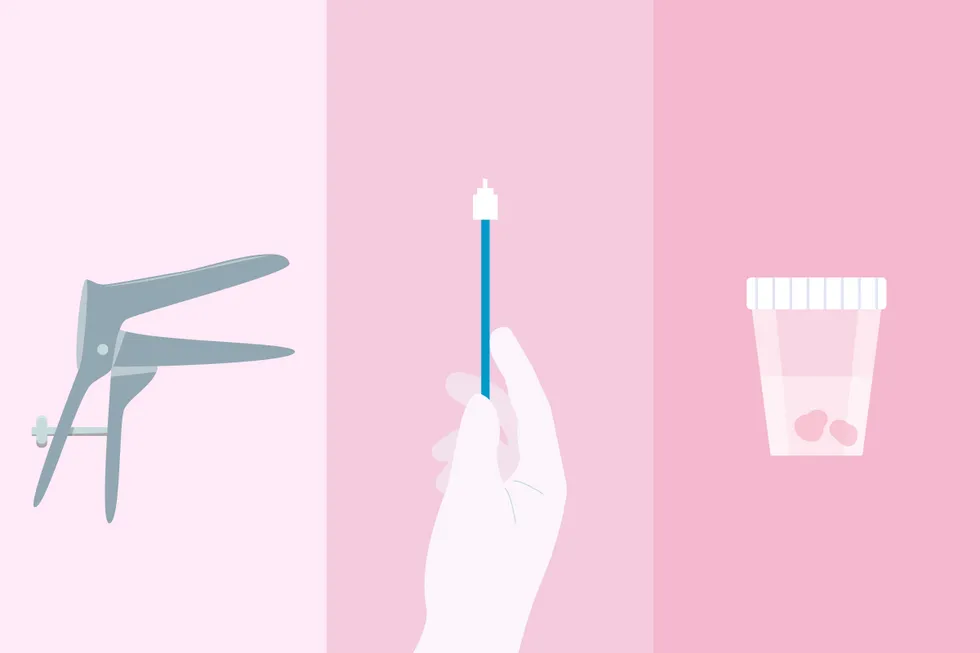The main category of Fitness News.
You can use the search box below to find what you need.
The main category of Fitness News.
You can use the search box below to find what you need.
Castor oil is a powerhouse ingredient with scientifically proven benefits for both skin and hair. It is rich in ricinoleic acid, a unique fatty acid with antimicrobial, anti-inflammatory, and deeply hydrating properties. Various studies have supported its use in skin care and hair care for hydration, anti-aging, wound healing, and promoting hair growth.
Castor oil is rich in ricinoleic acid, a monounsaturated fatty acid that acts as a natural humectant, drawing moisture into the skin.A study in the International Journal of Molecular Sciences (2018) highlighted that humectants like castor oil help maintain skin hydration by reducing trans-epidermal water loss (TEWL).
It boosts collagen and elastin production, which keeps the skin firm and reduces fine lines. A 2012 study published in Pharmacognosy Research found that castor oil is rich in antioxidants that fight free radicals, which cause premature aging.

The ricinoleic acid in castor oil has antimicrobial and anti-inflammatory effects. A study in the Journal of Applied Microbiology (2016) showed that ricinoleic acid inhibits the growth of Propionibacterium acnes, the bacteria responsible for acne.
The ability of castor oil to increase collagen and elastin synthesis makes it useful for reducing scars and stretch marks over time. Castor oil promotes wound healing by enhancing tissue regeneration. A study in Wounds (2015) found that applying castor oil dressings improved healing in chronic wounds.
Research in Evidence-Based Complementary and Alternative Medicine (2019) suggested that castor oil has anti-inflammatory properties beneficial for eczema, psoriasis, and dermatitis.
Oil-based cleansing is scientifically supported for dissolving sebum, dirt, and waterproof makeup without disrupting the skin barrier. A 2021 study in Clinical, Cosmetic, and Investigational Dermatology recommended plant-based oils like castor oil for gentle cleansing.
Castor oil is among several oils that have been used traditionally by people of color, particularly those with Indian or African heritage, to treat hair and scalp conditions.
Castor oil contains omega-9 fatty acids, which nourish the scalp and hair roots. A study in the Journal of Ethnopharmacology (2019) reported that ricinoleic acid increases circulation to hair follicles, potentially boosting hair growth.

It forms a protective layer around hair strands, preventing breakage and split ends. A 2017 study in Toxicology Reports found that castor oil reduces oxidative stress on the scalp, which can cause hair thinning.
Due to its antifungal and antibacterial properties, castor oil helps reduce dandruff caused by Malassezia, a common fungus linked to flaky scalp issues.
A study published in Journal of Cosmetic Science (2018) found that oils rich in fatty acids, like castor oil, penetrate the hair shaft, improving shine and softness.
A study in Dermatology Research and Practice (2021) concluded that castor oil improves lash and brow density by nourishing follicles with essential fatty acids and proteins.
Disclaimer
The Content is not intended to be a substitute for professional medical advice, diagnosis, or treatment. Always seek the advice of your physician or other qualified health provider with any questions you may have regarding a medical condition.
Pregnancy is an exciting time. But if you’re living with multiple sclerosis (MS) you probably have questions about how the chronic disease may impact your birthing plan, treatment plan and plans for breastfeeding.
MS can be unpredictable and relapses can have a severe impact on your quality of life. So, it’s important to talk to your healthcare provider (HCP) and be open about the health goals you have for yourself and your baby during every step of the family planning process. Knowing your options for disease-modifying therapies (DMTs) in advance can help you have the healthiest experience possible.
Here are some frequently asked questions about pregnancy, childbirth and breastfeeding if you have MS.
The great news is that the disease itself does not affect pregnancy outcomes. Studies show that women with MS don’t have higher rates of miscarriages, stillbirths, birth defects or other pregnancy complications compared to women without MS. However, some DMTs may cause harm to the fetus. So, it’s important to talk to your HCP before you get pregnant.
Read: Newly Diagnosed with MS? Here Are 10 Questions to Ask Your Neurologist. >>
Managing multiple sclerosis during pregnancy and breastfeeding comes down to carefully weighing the benefits versus the risks. And everyone’s situation is unique, so it’s important to have a conversation with your HCP about the specific medicines you take and your personal circumstances.
You may be able to take DMTs throughout your pregnancy and/or continue to take them if you’re breastfeeding. But it depends on the medication. Some MS medications may cause harm to the fetus and get into breast milk and may need to be stopped months before getting pregnant.
For example, studies show that interferon-beta and glatiramer acetate are generally considered safe during pregnancy. But some oral DMTs can harm the fetus so they’re often avoided. And monoclonal antibodies (mAbs), such as rituximab, natalizumab, ocrelizumab, ofatumumab and ublituximab, are usually avoided because of the risks they may pose to the fetus.
We don’t have a lot of information on how much medication gets into breast milk for most medicines. But, based on the data we do have, the injectables and mAb DMTs are likely safe for breastfeeding. Oral DMTs appear to be less safe. Breastfeeding is associated with decreased risk of postpartum relapses. Again, talking to your HCP can help you decide what the best option is for you and your baby.
Symptoms of MS can be different for each person, which can affect labor and delivery during childbirth. MS can affect the nerves and muscles needed to push during labor, which can make vaginal childbirth more difficult for some people. If this is the case, you may need a cesarean, also called a C-section. In rare cases, forceps or a vacuum can help with the birth.
Some studies show there may be a slightly higher risk for relapse right after pregnancy. So, people with active MS should talk to their neurologist or MS specialist soon after birth to figure out when they should start taking DMTs again. One study found taking natalizumab or fingolimod within the first six weeks of giving birth significantly reduced the risk for relapse three months after delivery but not immediately after birth.
Breastfeeding, however, may help decrease the risk of postpartum relapses overall. One review of 24 studies found lower rates of postpartum relapses in women who were breastfeeding compared with those who were not. Researchers noted that more research is needed into breastfeeding and postpartum relapse. As mentioned before, not all medications are recommended if you want to breastfeed. The risks of stopping or changing a medication may not outweigh the benefits.
If you’re living with MS, talk to your HCP about your options and have a plan in place so you can feel your best for yourself and your baby during this exciting time.
This educational resource was created with support from Novartis, a HealthyWomen Corporate Advisory Council member.
From Your Site Articles
Related Articles Around the Web
For many people, pregnancy is equal parts thrilling and terrifying. For one, you’re growing a tiny human in your body, which is very cool. But growing a tiny human also means a lot of changes and decisions to make regarding your health and the health of your unborn child(ren).
Any considerations and concerns become even more complicated if you’re living with a chronic illness. Many chronic conditions require life-long treatment, and pregnancy may affect the type of medication you take — and if you can even take medication at all.
This is where pregnancy registries come in.
Read: Family Planning with a Chronic Health Condition >>
A registry is a database that collects information on people with specific health conditions. The information can be used to help improve patient care, public health initiatives and research overall.
A pregnancy registry is no different. “Typically, pregnancy registries that are established here or elsewhere in the world are often focused on looking at a particular treatment or set of treatments that might be used for an underlying condition,” said Christina Chambers, Ph.D., MPH, associate director of the Altman Clinical & Translational Research Institute at the University of California, San Diego.
The data collected during a pregnancy registry can be life changing for people living with a chronic illness — especially people with multiple sclerosis (MS).
“People with chronic conditions like MS present a number of challenges in terms of the best treatment and providing the best health outcomes. And then when it comes to pregnancy, there’s a whole set of other questions that come up,” Chambers said.
MS is an autoimmune condition that affects your brain and spinal cord. Most women and people assigned female at birth (AFAB) are diagnosed with MS in their reproductive years but research is lacking when it comes to MS and pregnancy. This is because historically disease-modifying therapy trials didn’t include pregnant people. So, if you were enrolled in a trial, you had to quit if you got pregnant.
For a long time, people with MS were told not to get pregnant at all because treatments could potentially harm the unborn child. It wasn’t until 2002 that the FDA required drug manufacturers to create pregnancy registries for people with MS to help gather information on the effect of disease modifying therapies before, during and after pregnancy. The registries also record outcomes including miscarriages and birth defects. In other words, is the medication safe for pregnancy?
“It’s one of the reasons why we do pregnancy registry studies — so people who either find out they’re pregnant or taking the drug or were considering taking it in a future pregnancy can feel relatively reassured that there isn’t evidence to suggest [harm],” Chambers said.
We now know that people with MS can have healthy pregnancies. In fact, studies show that the rate of birth defects are about the same for people with MS compared to people without MS.
Still, there’s little information on the effects of disease modifying therapies and other medications on pregnancy for people with MS. The lack of research overall has left a huge gap in accessible data and many of the newer medications are still in research phases regarding safety and side effects during pregnancy.
Read: When Treating Multiple Sclerosis, Shared Decision-Making Matters >>
Joining a registry can help fill these gaps in information. Chambers noted that different registries have different requirements. Some registries only collect reporting from healthcare providers. Others rely on a combination of reporting from the pregnant person and information from the provider. “All of the ones that we do — and many other ones as well — consider the mother the primary source,” Chambers said.
How and when to sign up can also vary per registry. In many cases, a neurologist or HCP will refer the person to a registry. From there, it’s up to that person to contact the registry and ultimately decide if it’s a good fit. Also, online resources such as MotherToBaby, MSBase Registry and the National Multiple Sclerosis Society can help connect people to open registries. Drug manufacturers may also promote pregnancy registries online.
Chambers said it’s important to learn everything you can early on about the registry and ask questions about the time commitment — some studies can go on for years — and what’s expected from you during that time.
It’s also important to know who your information will be shared with.The issue of privacy and confidentiality is a valid concern when you’re sharing important details like medical records and personal information. But Chambers said part of the consent process for a registry includes how confidentiality is being protected, how the data is being stored and that no identifiable information is shared outside the staff working on the study. “So nobody could go say, ‘Mrs. So-and-so took part in the study’ — that would not happen,” Chambers said. “[The participant] can feel assured that she’s not going to see her picture or her name in a paper and that her identity is protected throughout the study.”
The one exception is if someone wanted to be part of a testimonial after participating in a registry. But, again, that’s up to the person in the study.
Pregnancy registries provide an opportunity to help other people with MS make educated decisions about pregnancy and treatment. The information collected can even impact decisions made long before a pregnancy is confirmed. That’s pretty powerful stuff. “We hear that over and over again … people saying I’m doing this because I wish I had known or I wish I had this information so I want to make sure that the next person does have it,” Chambers said. “The mom’s who do it — they’re amazing. They are contributing their time and their personal information. It’s a really gracious thing that they do.”
This educational resource was created with support from Novartis, a HealthyWomen Corporate Advisory Council member.
From Your Site Articles
Related Articles Around the Web
For many of us, a warm cup of tea or coffee is an essential part of our daily routine. Beyond their comforting aroma and energizing effects, research suggests that both beverages may offer significant heart health benefits. But how do they impact the cardiovascular system? Can your morning brew support a stronger heart? Let’s dive into the science behind tea, coffee, and heart health.
Both tea and coffee can be heart-friendly when consumed wisely. They contain antioxidants, polyphenols, and bioactive compounds that support cardiovascular health. However, quantity, quality, and preparation play a big role in their effects.
Benefits:

Alert:
Benefits:
Alert:
Too Much Black Tea = Kidney Stones – Due to oxalates, excessive black tea may contribute to kidney stone formation.
Watch for Added Sugar – Sweetened iced teas or bubble teas can be high in sugar.
Interference with Medications – Some herbal teas (like licorice root) may interact with heart medications.

Both tea and coffee offer heart-protective benefits, but the right choice depends on individual health conditions and preferences:
| Factor | Coffee | Tea |
|---|---|---|
| Caffeine Content | Higher (95mg per cup) | Lower (30–50mg per cup) |
| Blood Pressure | May cause a temporary spike | Helps lower blood pressure |
| Antioxidants | Polyphenols, chlorogenic acid | Flavonoids, catechins |
| Best For | Energy boost, brain function | Relaxation, Circulation |
Both tea and coffee can support heart health when consumed in moderation and in their purest form (without too much sugar or additives). If you have high blood pressure, tea (especially hibiscus or green tea) might be a better choice than coffee.
If you need mental alertness with heart benefits, go for black coffee or matcha.
Disclaimer
The Content is not intended to be a substitute for professional medical advice, diagnosis, or treatment. Always seek the advice of your physician or other qualified health provider with any questions you may have regarding a medical condition.
Medically reviewed by Blair McNamara, M.D.
Cervical cancer is rare in the U.S. — making up less than 1% of all cancers — and it’s highly treatable. In fact, if it’s found in early stages, the 5-year survival rate is over 91%.
“Cervical cancer in the United States should be preventable. We’ve got an excellent screening test, with Pap smears and HPV testing,” said Monica Vetter, M.D., a board-certified gynecologic oncologist with Norton Cancer Institute.
Even though routine screening can prevent almost all cervical cancers, nearly 1 out of 4 women were overdue for their cervical cancer screenings in 2019. And it was estimated that more than 13,800 people were diagnosed with cervical cancer in 2024.
Asian women, Hispanic women and women living in rural areas were more likely to be behind on their screenings. And a 2022 study found that 1 in 4 Hispanic and Black women have delayed follow-ups, with Black women having the lowest follow-up rates after abnormal findings. Black women are also more likely to have higher rates of cervical cancer, more advanced stages at diagnosis and higher mortality.
Members of the LGBTQ community are also more likely to be behind on screening and are more likely to be incorrectly told by a healthcare provider that they do not need cervical cancer screening.
Read: Removing Barriers to Cervical Cancer Screening for the LGBTQ Community >>
If you have cervical cancer, you’ll likely be referred to a gynecologic oncologist, a doctor that specializes in treatment for cancer of the female reproductive system. Treatment can include surgery, chemotherapy, radiation, targeted therapy and immunotherapy. Which treatment is best for you depends on several factors, including the cancer stage and whether you want to get pregnant in the future.
Surgery, along with some other treatments, can affect your ability to get pregnant in the future. Fertility-sparing surgeries, conization or radical trachelectomy, are options for early-stage cervical cancer.
Cone biopsy, also called conization, is a surgical option for precancerous cells and early-stage cervical cancer that will still allow you to potentially get pregnant. A cone biopsy takes a large amount of tissue and can also get rid of abnormal cells so they don’t become cancer in the future. “I tell people to think about it like I’m trying to take an ice cream scoop out of the center of their cervix,” Vetter said
There are three types of cone biopsies:
LEEPs can be done in the office using local anesthesia, whereas cone biopsies happen in the operating room, likely under general anesthesia.
Depending on the size and features of your cancer, your surgeon may recommend a trachelectomy instead of conization. A simple trachelectomy removes just the cervix and a radical trachelectomy removes the cervix and surrounding tissue. Your surgeon may also recommend the removal of nearby lymph nodes. Trachelectomies allow for the possibility of future pregnancy because the uterus is left in place. These procedures are done in an operating room under general anesthesia.
There are several types of hysterectomies that can be used to treat cervical cancer. All of them remove the option of getting pregnant in the future.
In a total or simple hysterectomy, the surgeon removes the uterus, including the cervix. The ovaries are usually left in place. This type of hysterectomy can be used to treat certain types of very early cervical cancer.
Radical hysterectomies are a more complicated surgery that removes the uterus and cervix as well as the tissue surrounding the cervix and the upper part of the vagina. The ovaries usually are not removed. Radical hysterectomies have more potential side effects than total hysterectomies, such as bowel or bladder complications.
Hysterectomies can be performed through the abdomen or vagina, and can be open surgery or minimally invasive surgery, including laparoscopic or robotic-assisted surgery. Depending on the stage of your cervical cancer, your surgeon may recommend open surgery as the safest option for hysterectomy. Your surgeon will be able to explain the risks and benefits of the different routes of hysterectomy in your case.

Chemotherapy is a treatment that uses drugs to kill or slow the growth of cancer cells. It is usually given via IV infusions.
Radiation therapy uses high energy X-rays to kill cancer. Radiation can be administered with X-ray machines, called external beam radiation, or with small capsules that are placed near or in the cervix, called internal or implant radiation.
Radiation is commonly given in combination with chemotherapy, known as chemo-radiation, because it’s more effective than radiation alone. Chemotherapy and/or radiation are sometimes used after hysterectomy and chemo-radiation can be used for tumors that are too big for a hysterectomy. Sometimes chemo-radiation is curative.
Chemotherapy alone is often given if you can’t do other treatments or if you have recurrent cervical cancer — cancer that’s come back after being treated by surgery or chemo-radiation. Unfortunately, it’s not possible to become pregnant after you’ve had chemo-radiation therapy because of the radiation damage to the uterus.
Immunotherapy uses your body’s immune system to fight cancer and is often used along with chemotherapy, particularly if you have stage 4 cancer at diagnosis. Given by IV infusion, immunotherapy works by taking away the cancer’s ability to hide from immune cells and improving your immune system’s ability to destroy the cells. Not everyone is a candidate for immunotherapy, but if you are and can get the therapy to respond to the cancer, it can keep you in remission longer. Your ability to conceive after immunotherapy will depend on the type of treatment you had. Some treatments interfere with your fertility and others carry a high chance of causing birth defects.
Targeted drug therapy uses medicine that blocks proteins that help cancer cells grow and spread. Some targeted drug therapies are IV infusions and some are pills. Some targeted therapies are also considered immunotherapy.
Targeted drug therapy is often used for recurrent disease. More research is needed to fully understand how targeted drug therapy affects fertility.

“The incidence or the rate of advanced-stage cancers is increasing, and we need to do a better job of getting people screened,” Vetter said. “Get your Pap [tests]. If you’re having any weird symptoms, like vaginal bleeding after sex or bleeding in between periods, go in and be evaluated. When cervical cancer is caught early, there’s a very high cure rate.”
This educational resource was created with support from Merck.
From Your Site Articles
Related Articles Around the Web
February is Black History Month.
Black women have made many inventions and discoveries that have improved public health and advanced technology. Thanks to the vision, determination and dedication of Black female scientists and inventors, healthcare providers can better identify, treat and even prevent potentially deadly health conditions.
Technological achievements aren’t limited to Black women with advanced degrees in medicine and science. The simple sanitary belt, an invention that made menstrual protection more accessible and comfortable for all women, emerged from the hands of Mary Kenner, a Black woman who recognized an unmet need and worked to find a solution.
It’s a common story for many of the Black female healthcare pioneers being recognized this month – they identified a gap in care for women and people of color, and aimed to fix it. Here are just a few of their healthcare innovations.
1. Laserphaco probe – Patricia Bath, M.D.
Invented by Patricia Bath, M.D., this device and technique revolutionized cataract surgery by removing the lens, making the incision and vacuuming out the fragments.
As an eye clinic intern at Harlem Hospital and Columbia University, Bath noticed that more of the patients in Harlem, a majority Black community, were blind or visually impaired than patients at Columbia. That led her to conduct a study that found blindness among Black patients was double that of white patients, and she concluded the disparity was due to lack of access to ophthalmic care.
Her work in creating the field of community ophthalmology increased screening for underserved populations, a practice now prevalent around the world, and led to earlier treatment for vision-related issues. As a laser scientist and inventor, her interest, experience and research on cataracts led to her invention of a new device and method to remove cataracts — the laserphaco probe.
Bath was the first Black woman to receive a medical patent and the first Black woman to complete an ophthalmology residency at New York University. She was posthumously inducted into the National Inventors Hall of Fame in 2021.
2. mRNA-1273 technology – Kizzmekia Corbett-Helaire, Ph.D.
When Covid-19 became a worldwide pandemic in 2020, the world’s top researchers began work to create a vaccine against the virus. Kizzmekia Corbett-Helaire, Ph.D. led the team at the National Institute of Health (NIH) that developed this technology, which was used to create Covid vaccines.
Today, she’s an assistant professor of immunology and infectious diseases at Harvard T.H. Chan School of Public Health and Howard Hughes Medical Institute Freeman Hrabowski Scholar.
3. Herpes zoster (shingles) virus – Evelyn Carmon Nicol
Immunologist and microbiologist Evelyn Carmon Nicol was the first person to isolate the varicella-zoster virus, which causes chickenpox and shingles, in tissue culture. She was also one of the first Black women to receive a patent for molecular biology.
Other achievements included assisting with polio vaccine development by culturing the virus in HeLa cells; developinga test for Toxoplasma gondii, the parasite that causes toxoplasmosis; and developing some of the first commercial test kits for HIV.
4. Adjustable sanitary belt – Mary Kenner
Mary Kenner invented an adjustable sanitary belt with a moisture-proof pocket to reduce staining from menstrual blood.
Kenner came from a family of inventors, and grew up tinkering with everyday items to find effective solutions. Although Kenner started college at Howard University, she dropped out for financial reasons and became a florist. Kenner still used her free time to work on inventions and received five patents, including the sanitary belt in 1957.
Before adhesive maxi pads were developed, nearly all women used sanitary belts to hold pads in place in their undergarments. At the time, the sanitary belt represented freedom from balled up rags or towels that often shifted and failed to stay in place, leading to staining of clothes, discomfort and embarrassment. Kenner said a company expressed interest in marketing her idea but backed away when they learned she was Black.
In 1976, Kenner also patented a walker with an attachable tray and pocket – which she created after her sister was diagnosed with multiple sclerosis.
5. Newborn sickle cell screening – Marilyn Hughes Gaston, M.D.
Marilyn Hughes Gaston, M.D. published a study that led to a nationwide screening program to test newborns for sickle cell disease, allowing them to receive immediate treatment.
Before publishing her study in 1986 while working at the National Institutes of Health, Gaston worked for years as a pediatrician in Cincinnati. But years earlier, as an intern at Philadelphia General Hospital, she admitted a baby with a swollen hand. Unable to determine why the baby’s hand was swollen, Gaston’s supervising resident suggested she look at blood work for evidence of sickle cell disease, which the baby had.
That incident made Gaston dedicate her life to studying sickle cell disease in children and push for routine screening. She found that early treatment could help prevent sickle cell disease complications, saving the lives of countless children. Newborn sickle cell disease screening is now a routine public health service practice.
6. Illusion transmitter – Valerie Thomas
Invented by Valerie Thomas, this device uses concave mirrors to create optical illusion images. NASA later used Thomas’s technology in its satellite technology. Thomas grew up dreaming of working with electronics, but didn’t get the opportunity until she majored in physics at Morgan State College. In her senior year, after signing up for a chance to speak to job recruiters, she heard from a NASA representative who wanted to hire her after graduation.
At NASA’s Goddard Space Flight Center in Maryland, Thomas worked on numerous projects and became adept with computer technology. She contributed to Landsat image processing software systems, which deliver images of the Earth’s surface. She later invented and patented the illusion transmitter — a type of 3D display technology used in surgery.
From Your Site Articles
Related Articles Around the Web
Accessories have always been a way to express individuality, but in 2025, bold pieces are making even bolder statements. From oversized scarves to chunky belts and metallic handbags, the must-have accessories this year aren’t just additions to your outfit—they’re the focal point. Let’s dive into how to incorporate these attention-grabbing details into your everyday wardrobe.
In 2025, scarves aren’t just for warmth—they’re a statement of their own. Think bigger, bolder, and more dramatic. Oversized scarves in luxurious materials like cashmere or wool not only add warmth but become the centerpiece of your outfit. Pair a large, patterned scarf with a simple sweater and tailored pants for a look that feels effortlessly chic yet striking.
Example: A rich, burgundy wool scarf worn loosely around the neck can transform a basic black dress and boots into a fashionable outfit, perfect for both casual daywear and evening cocktails. The key here is letting the scarf take center stage by keeping the rest of your ensemble simple and understated.

High-End Option: Loro Piana Cashmere Scarf ($695) – A luxurious cashmere scarf in timeless neutrals or vibrant colors.
Affordable Option: Quince Mongolian Ribbed Cashmere Scarf ($99) – Soft, cozy, and available in a range of colors, perfect for layering with any outfit.
Chunky belts are a major trend in 2025. Whether they’re adorned with bold buckles, oversized hardware, or intricate textures, these belts are all about creating structure and emphasizing the waist. They add personality to any outfit—whether you’re wearing a dress, jeans, or even a tailored blazer.
Example: Try pairing a chunky belt with a flowy, knee-length dress. This adds definition to your figure, making the look feel modern and fashionable. If you’re opting for a more casual look, a thick leather belt over an oversized sweater and high-waisted jeans can add structure while keeping the vibe relaxed.
High-End Option: 12th Tribe Jasper Black and Gold Statement Belt ($88) – A bold and sleek leather belt with a signature buckle that adds structure to any outfit, perfect for creating an instantly elevated look.
Affordable Option: ASOS Design Wide Waist Belt ($26) – A great value option with a bold buckle that makes a stylish statement.
2025 is all about metallics, and handbags are no exception. From sleek silver to shimmering gold, metallic bags offer an eye-catching contrast to any outfit. These bags are perfect for those who want to add a touch of glamour without going overboard. Whether it’s a small crossbody or a larger tote, a metallic bag can elevate a simple outfit to new heights.
Example: A silver metallic clutch paired with a black evening dress or a gold handbag with a crisp white blouse and jeans can make your outfit pop. Even for casual outings, a metallic shoulder bag with a simple denim jacket and boots gives a cool, fashion-forward edge.
High-End Option: Stella McCartney Metallic Falabella Bag ($580– used on The RealReal) – A luxurious, iconic metallic handbag with a distinctive chain strap.
Affordable Option: Rhinestone Mini Clutch Purse ($16.99) – A chic and affordable rhinestone bag with a sleek design, perfect for day or night.
No accessory says “bold” quite like oversized earrings. From chunky hoops to geometric designs, big earrings are a quick way to frame your face and add a bit of drama to your look. While they can be eye-catching, you can also wear them in a way that feels casual enough for day-to-day outfits.
Example: Pair large statement earrings with a simple white shirt and jeans. The earrings will instantly elevate the outfit, giving it a polished yet effortless vibe. For a night out, choose earrings with a touch of sparkle to bring your evening look to life.
High-End Option: Balenciaga Oversized Hoops ($495) – Bold, geometric hoops with a high- fashion edge.
Affordable Option: Anthropologie Molten Metal Earrings ($30) – Beautiful, bold earrings in a variety of styles that give a luxurious feel without the price tag.
The key to wearing bold accessories is balance. When incorporating these pieces into your daily wardrobe, let them be the stars of the show. Keep the rest of your outfit simple, and allow the accessories to shine. Here’s how you can add these must-have details to your everyday style:
Keep it minimal with clothing: Opt for solid, neutral colors for your base outfit, and let the accessories add the pop of personality. A simple black dress with a chunky belt or an oversized scarf adds just the right amount of flair without being over the top.
Mix and match: Don’t be afraid to combine these bold accessories together. For example, you can pair an oversized scarf with a metallic handbag—just make sure the colors complement each other.
Day-to-night transitions: Metallic bags and statement earrings are versatile enough to take you from daytime casual to nighttime glam. Swap out a small, everyday bag for a metallic one, and add statement earrings to your look after work for an effortlessly chic transformation.
High-End Option: Maison Miru Bubble Lock Necklace – ($230)
A bold, timeless piece that combines high-quality gold plating with a chunky design. It’s a perfect statement necklace for both casual and formal outfits.
Affordable Option: BaubleBar Statement Necklace – ($48)
This necklace brings high-fashion appeal with chunky links and bold design, offering a luxurious look at a fraction of the cost.
Bold accessories are the must-have details for 2025, and they offer endless opportunities to experiment with your style. Whether you’re wrapping yourself in an oversized scarf or adding a touch of metallic shine to your outfit, these accessories are all about making a statement. The trick is to incorporate them into your wardrobe in a way that feels personal, fashionable, and fun.
Disclaimer
The Content is not intended to be a substitute for professional medical advice, diagnosis, or treatment. Always seek the advice of your physician or other qualified health provider with any questions you may have regarding a medical condition.
As told to Jacquelyne Froeber
February is American Heart Month.
It was Friday night in Waikiki and I was late. I rushed backstage and apologized to the crew. “I went to the M.A.C. counter to get my makeup done and it took longer than planned,” I said.
That wasn’t exactly true. I didn’t plan to go to M.A.C. — I’d forgotten my makeup at home. And it wasn’t the first time. Embarrassed, I avoided eye contact with the other singers.
The truth was I didn’t know what was going on with me. I was tired all the time — drained — even walking up a flight of stairs took my breath away. And the forgetfulness wasn’t like me. I chalked it up to working a full-time job and singing a few nights a week, but I knew something was off.
Just before I went on stage, I bent down to put water in my cup and felt pain in my back. I gasped and stood up quickly. I’d felt that pain before.
About a year earlier, I was visiting friends in Las Vegas when I started having heartburn and back pain and nausea that didn’t go away. I knew something wasn’t right so I called 911. At the hospital, I was diagnosed with myocarditis — inflammation of the heart muscle. But they couldn’t tell me why it was happening. I hadn’t been sick and there was no known infection. I tried to ask questions — why was I in such severe pain? — but they basically blew me off, gave me morphine that literally made me sick and said the symptoms would go away on their own. I had a follow-up appointment back at home, and the doctor said the same thing. I had myocarditis and I’d be fine, but I shouldn’t push myself or exercise for about a month.
2019
Now, that same feeling was back but a thousand times more intense. I did what many women do when experiencing heart problems — I tried to work through it. I bartered with myself: If I could get through the set, I’d drive myself straight to urgent care.
But I couldn’t do it. By then, I could barely stand up. One of the singers called 911, and responders took me out on a stretcher through the packed venue of visitors and locals waiting to see the show.
At the hospital, the doctor came into the room and went over my symptoms with me. He said I was having a heart attack and they wanted to do surgery.
I chuckled. “That’s not happening,” I said.
I was only 39. I exercised most days of the week. I knew I could probably eat better, but it wasn’t like I was having a burger and fries every day. Also, it wasn’t even possible for someone my age to have a heart attack … was it?
I called my family. They agreed that it seemed odd that someone so young could have a heart attack but that I should have the procedure because something was wrong. I couldn’t disagree.
When I woke up from surgery, the doctor confirmed that I did have a heart attack and they had to do an angioplasty. He showed me on the X-ray where the balloon had been implanted in my heart. He also said that I was anemic — apparently low iron levels can be a contributing factor to a heart attack — and I needed to take cholesterol and blood pressure-lowering medication.
I nodded along as he handed me prescriptions and I was cleared to go home. After he left, I sat there stunned and tried to wrap my brain around what had just happened. I was still in shock when a nurse commented on how beautiful I looked. I realized I was still in full makeup — lashes and all — from the night before.
In the weeks following the surgery, I was amazed by how much better I felt physically. I didn’t have the labored breathing. I wasn’t tired. But mentally, I struggled. I was scared that I was going to have another heart attack. I tiptoed around my life in a state of anxiety waiting for the other shoe to drop.
I was also depressed. I thought I was doing everything right before the heart attack and yet it still happened. I felt damaged in a way — like it was my fault. It took some time, but I started to see a therapist and quickly learned that being mindful of your mental health after a traumatic health event is just as important as taking care of your physical health.
When I talked to family and friends about what happened, everyone said the same thing: You’re too young to have a heart attack. Most people, like myself, thought you had to be older and experience chest pain — but it’s not like the movies. Women can have different symptoms than men, including severe heartburn, back pain and nausea just like I did. And the forgetfulness was also a sign due to the reduced blood flow to my brain.
 2019
2019
I wanted to spread the word, so I contacted my local chapter of the American Heart Association. I started speaking at events for heart attack survivors and sharing my experience with myocarditis, which was on the rise in young people during Covid. In 2002, I was honored to be an ambassador for the American Heart Association’s Go Red for Women movement to help raise awareness about heart health.
I’ve learned that a heart attack can impact a woman’s life in ways you probably wouldn’t think of. For example, I couldn’t continue taking birth control pills and I’m not a candidate for hormone therapy because hormones increase the risk for a cardiovascular event. Also, I was devastated to learn that I couldn’t be a bone marrow donor despite being a match for someone who really needed it.
Looking back, I wish I’d advocated for myself more during visits with healthcare providers. I would’ve asked more questions when told we’d “monitor” my cholesterol levels but that didn’t include a timeline or the fact that high cholesterol could lead to a heart attack. I would’ve educated myself about blood work and the numbers and the signs and symptoms of heart attacks in women.
Going through such a terrifying health scare changed my perspective on life. Not long after the heart attack, I quit my corporate full-time job to focus on singing and entertaining — mainly on cruise ships around the world.
So far, I’ve been to 37 countries and I wake up excited to do what I love every day because I know all of it can be gone in an instant — so why not live the life you want to live? Just make sure you’re taking care of your heart along the way.
Have your own Real Women, Real Stories you want to share? Let us know.
Our Real Women, Real Stories are the authentic experiences of real-life women. The views, opinions and experiences shared in these stories are not endorsed by HealthyWomen and do not necessarily reflect the official policy or position of HealthyWomen.
From Your Site Articles
Related Articles Around the Web
Valentina Gottardi is an Italian beach volleyball player. She with Marta Menegatti played at 2024 Summer Olympics in Paris. She is originally from Modena Italy and currently lives in Formia.
In Women’s Beach volleyball Representing Italy she won Silver medal at the 2024 European Beach Volleyball Championships that took place from 13th to 18th August 2024 in The Hague, Arnhem, and Apeldoorn in the Netherlands.
She also stood First at World Tour Saquarema 2023, Second at World Tour Edminton 2023, Second at World Tour Madrid 2022, Second at World Tour Lecce 2022 and Fifth at World Championships U19 2021
Women Fitness President Ms. Namita Nayyar catches up with Valentina Gottardi an exceptionally talented Italian Beach volleyball player, Silver medalist of 2024 European Beach Volleyball Championships, here she talks about her fitness routine, her diet, and her success story.

You were born in Modena, Italy. Where did you have your early education and beach volleyball training? Now you study at at Unimore – University of Modena and Reggio Emilia and presently live in Formia. You stood 5th at World Championships U19 2021. This later propelled your career to the height where you have been at the top of the world as a beach volleyball player. Tell us more about your professional journey of exceptional hard work, tenacity, and endurance?
I was born in Modena, a city strongly devoted to indoor volleyball and characterized by the presence of professional teams, both female and male, that compete at the highest level in Europe. Traditionally in town there are also many youth teams programs, and this is where my career started. My family has always been sporty and has passed on to me the basic values of sport, immediately integrating them into my personal growth. Before arriving at indoor volleyball, I practiced many disciplines, including tennis, swimming and rhythmic gymnastics.
But it was in volleyball, first indoors and even more later on the sand, that I found my best expression. The complete transition to beach volleyball occurred towards the end of high school, which I attended in Modena. At that time, I already had a clear idea of which studies I preferred and where I excelled: STEM subjects.
So at the end of 2020, the Italian Volleyball Federation saw me playing and decided to involve me in the Club Italia youth project: an under-18 permanent training group based in Formia, a beautiful sea location south of Rome. Formia is an iconic location where various generations of Italian Olympians trained.
Thanks to the hard work put together with an extraordinary team of coaches and conditioning trainers, completed by an excellent medical staff with specialists in sport medicine, physiotherapy, dietetics and psychology, after just one year, at the end of 2021, I placed fifth at the U19 world championship in Phuket, Thailand.
I had just enrolled at the University of Modena and Reggio Emilia, choosing a degree in Management Engineering, following up on my educational aspirations. The Tokyo Olympics had ended not many months before, and the Italian Volleyball Federation was preparing the program for Paris 2024. It was then that I was brought into the senior national team project, with Marta Menegatti as my teammate, who had already played in three Olympics.
At this moment, after my first Olympics in France (and her fourth) and a silver medal at the European Championship held last August in Holland, our couple occupies the sixth place in the world FIVB beach volleyball ranking.

It is a dream for a beach volleyball player to play in the European Beach Volleyball Championships. You won the Silver medal in the 2024 European Beach Volleyball Championships that took place from 13 to 18 August 2024 in The Hague, Arnhem, and Apeldoorn in the Netherlands. Tell us more about this spectacular achievement of yours?
The Netherlands hosted an extraordinary edition of the European Championships. The Dutch volleyball culture is at the highest level, and it was very motivating to be supported by a competent audience that applauded every single match. The tournament was played towards the end of the season, but thanks to a dedicated training micro-cycle, I managed to gather the right energy to win my first medal in a European championship in a final played in the magnificent setting of Scheveningen, the beach of The Hague.
You stood 2nd at World Tour Madrid 2022 that was held from 19.5.22 to 23.5.22 and also at World Tour Lecce 2022 that was held from 7.7.22 to 11.7.22. How does such winning honour’s act as a catalyst in your metriotic rise as a world leading beach volleyball player?
The top beach volleyball world circuit is the Volleyball World Beach Pro Tour, organized by the world volleyball federation, the FIVB. The basic tournaments of this circuit are the so-called Futures. They are the entry level for any young player. Getting on the podium immediately in 2022 allowed me to quickly move on to the next level of tournaments, the Challenges.
Having collected a few podiums again at this higher level, including a victory in Brazil in April 2023, I have been pretty soon able to consolidate my presence at the Elite 16 level, the top of the circuit. Considering that the points you collect in the Elite16 are the biggest contributors to the race towards the Olympics, I see the first Futures played as the beginning of my rapid ascend.
Full Interview is Continued on the Next Page
This interview is exclusive and taken by Namita Nayyar President of womenfitness.net and should not be reproduced, copied, or hosted in part or full anywhere without express permission.
All Written Content Copyright © 2025 Women Fitness
Disclaimer
The Content is not intended to be a substitute for professional medical advice, diagnosis, or treatment. Always seek the advice of your physician or other qualified health provider with any questions you may have regarding a medical condition.
Overcoming addiction is a monumental achievement, particularly for men who often grapple with societal expectations and personal doubts. While the recovery journey is undeniably challenging, the role of a reliable rehab center is invaluable in rebuilding confidence and fostering a healthy, fulfilling life post-addiction. Confidence is more than just a feeling; it results from self-esteem, achievement, and the ability to face challenges with resilience. Understanding how rehab contributes to this transformation is crucial for men seeking a new lease on life.
Reliable rehabs provide a structured environment where men can begin their recovery journey with clarity and support. These facilities offer a sanctuary from the external pressures that might have fueled addiction, creating a safe space for self-discovery and healing. Centers like Heartwood Recovery excel in delivering comprehensive care that addresses each individual’s unique emotional, physical, and psychological needs. By tailoring treatment plans to fit personal requirements, these centers lay the foundation for sustained success, promoting confidence through tailored support.
There is no one-size-fits-all approach to addiction rehabilitation. Creating individualized treatment programs that address each person’s unique strengths and problems is crucial to trustworthy rehabilitation. These facilities provide customized sobering pathways by evaluating each client’s medical history, therapy preferences, and personal background. Personalized care fosters a sense of self-worth and increases the efficacy of treatment. As a result of feeling recognized and understood, men experience a newfound sense of confidence in their capacity to overcome addiction.
Recovery is not a solitary journey. Creating a network of encouraging connections is essential to increasing self-confidence. Reputable rehabilitation facilities help with this by providing community service projects and group treatment sessions. In these communal settings, men can learn from others, share their experiences, and hone critical social skills. Forming connections reduces feelings of isolation and creates a supportive framework that bolsters confidence. Men rediscover their worth and potential with each shared story and moment of empathy.
Cognitive-behavioral therapy (CBT), motivational interviewing, and mindfulness practices are integral to rehab programs—each contributing to confidence-building. Through CBT, men learn to identify and counter negative thought patterns that undermine self-esteem. Motivational interviewing helps them embrace change by setting clear, achievable goals, while mindfulness teaches them to stay present and appreciate small victories. These methodologies collectively reinforce the belief that change is possible and that they can lead fulfilling lives.
Holistic recovery programs address more than the addiction itself; they focus on the entire well-being of the individual. This includes physical health, mental clarity, and spiritual fulfillment. Reliable rehabs balance traditional treatment with holistic practices by integrating activities like yoga, meditation, and art therapy. These activities enhance self-awareness and self-expression, allowing men to cultivate a deeper connection with themselves. This comprehensive approach ensures that confidence is built on a solid foundation of health and balance, paving the way for enduring recovery.
Goal setting is a powerful motivator that rekindles hope and confidence. In rehab settings, men are encouraged to set realistic goals, whether completing a step in their treatment plan or enhancing a personal skill. Achieving these goals, regardless of size, provides a sense of accomplishment. With each success, confidence grows, fostering a positive cycle of motivation and self-belief. The practice of setting and reaching goals in rehab teaches men that they possess the capability to change their lives beyond addiction.
The transformation from addiction to recovery is profound, marked by the rekindling of confidence and purpose. Reliable rehab centers are pivotal in this transformation, equipping men with the tools, skills, and support needed to rebuild their lives. Through structured programs, holistic approaches, and a nurturing environment, these facilities empower men to believe in themselves anew. The journey through recovery is challenging yet immensely rewarding, as each step fosters resilience, strength, and, ultimately, a renewed confidence that propels them into a brighter future.
Disclaimer
The Content is not intended to be a substitute for professional medical advice, diagnosis, or treatment. Always seek the advice of your physician or other qualified health provider with any questions you may have regarding a medical condition.